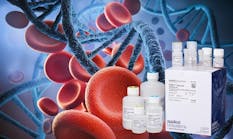A day without a laboratory
Sit down, my children, and let me tell you a story.
One day in 2011, all the laboratory scientists in the United States decided to take the same day off in order to celebrate National Medical Laboratory Professionals Week. Since the inception of their field in the 1920s,* no one had ever gathered them all together for a party.
Besides, working “behind-the-scenes” as they did, who would miss them for an afternoon? Their ranks were the least-known of the professions in the medical/healthcare field. Even when hospital co-workers ventured into the laboratory, they often had only a vague idea of the kind of work done there by lab scientists. People outside the medical field were often baffled: “You work in a laboratory? What do you do, take blood or something?”
So, all the medical technologists, laboratory technicians, microbiologists, virologists, cytologists, toxicologists, and phlebotomists, along with scores of laboratory managers and department supervisors, as well as the ranks of medical directors and pathologists, packed drinks and sandwiches, grabbed kites and blankets, and trooped off to their special party — a picnic.
While they were off enjoying themselves, many critical events began to occur at the hospitals, physicians’ offices, prisons, and blood banks.
Surgeries ceased; surgeons could not risk operating on a patient, not knowing if the patient’s physical condition would allow him to survive the surgery.
Forget blood transfusions — there were no red blood cells for surgeries or traumas, no plasma for burn victims or for patients with coagulation-factor abnormalities. For patients with the rare hereditary disorder hemophilia no cryoprecipitate was at hand to prevent bleeding.
Emergency-room (ER) physicians found it difficult to evaluate patients. Was the unconscious patient brought in by ambulance experiencing hypoglycemia? Loss of blood? Carbon-monoxide poisoning? A drug or alcohol overdose? Was the patient with chest pain experiencing a heart attack? Was the feverish patient harboring a infection somewhere in her body? Without laboratory results, ER doctors found it next to impossible to diagnose any ER patients.
That day, cancer patients received no chemotherapy. Without the lab’s evaluation of the patient’s white blood cells, red blood cells, platelets, and electrolytes, oncology nurses and physicians could not determine if any patient would benefit from — or, indeed, even be able to survive — the next dose of chemotherapy drugs.
Who could treat infections without microbiologists to isolate and identify pathogens, and determine which antibiotic would be effective? In the area of public health, outbreaks of disease that could potentially affect thousands went completely undetected all day long.
On that a single day, medical care was set back a century, as clinicians did their best to treat their patients without the valuable information normally supplied by the laboratory. It is estimated that between 80% and 90% of medical decisions are based upon laboratory data.*
What, my children? Of course, this is a fairy tale.
This country’s more than 300,000* practitioners of clinical laboratory scientists would never abandon their work for a day. They are the “detectives” of the medical world, working in the background, carefully assembling and making sense of all sorts of clues in order to save lives.
So, raise a beaker (a clean one, please) to the laboratory professionals whose work is an essential component of the healthcare system of the nation. Today, we celebrate the clinical laboratorian as a key member of a healthcare team.*
—Lyn Kidder,
a medical technologist since 1976,
works in the Lincoln County
Medical Center laboratory,
Ruidoso, NM.
*
ASCLS
Note: Chuck Millstein, MBA, MT(ASCP), CLDir(NCA) and Colleen K. Gannon, MT(AMT) HEW, will be back in May.





